Easier Integration between S/4HANA and Microsoft Teams
Reading time: 4 mins
Key Takeaways
Integrating SAP processes with Microsoft Teams can streamline workflows but typically involves complex development and maintenance.
Looply simplifies the integration of SAP and Teams by offering a no-code, AI-assisted platform, reducing the need for custom development.
Looply's tools, such as the Workflow Studio and Notification Centre, facilitate easy deployment, management, and maintenance of SAP and Teams integrations at scale.
Integrating key SAP processes to Microsoft Teams, such that approval processes can be executed in Teams, can accelerate those processes and lead to a range of benefits.
Integrating key SAP processes to Microsoft Teams, such that process notifications are provided in Teams, and approval processes can be executed in Teams, can accelerate those processes and lead to a range of benefits.
There are several approaches you can take to achieve this integration.
Explore related questions
Within S/4HANA or Business Suite, you will need to build some kind of trigger from each process, in order to pass document and process data to a cloud-based application.
That application would then need to handle the request, and trigger the generation of a Microsoft Adaptive Card within Microsoft Azure, such that it can be pushed into the appropriate Teams chat.
So, some determination of the Teams account of the recipient will be required along the way.
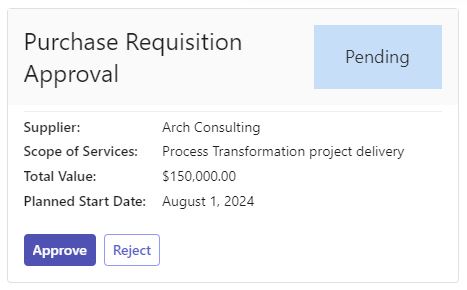
Microsoft Adaptive Card
If the user takes an action on the card, such as Approve or Reject, or adds in information (like rejection reason), then the action and information need to be captured, and then sent back to SAP, such that the particular business process can continue.
So once again, a cloud based application will be required to accept the data from the Adaptive Card, to determine what service to call on what back-end SAP system, and to make that call, handling user authentication along the way.
Back in S/4HANA or Business Suite, the service might not be pre-delivered: It is likely that some custom service will be needed to accept the data and trigger the update such that the process continues.
This means quite a lot of development for each process. And even if you harness some kind of integration software, this will only handle the API call, not the major developments.
Most approaches will involve multiple products, with complex configuration and development. And you need to do this every time, for each and every specific business process step.
ABAP development
- oData API to fetch documents
- oData service to trigger SAP Event Mesh
- oData service to update a document/process
BTP
- Various service set-up
- Configure SAP Event Mesh
- Develop custom application
- Develop UI for Teams Chat app in Bridge Framework using JSON
- Deploy resources to Microsoft Azure using Bridge Framework Automation Pipeline
Azure
- Various set-up tasks
With this approach you can, for example, trigger Event Mesh based on an item in Workflow.
Once the action is taken on the card, the update would integrate back with the Workflow, so the process would continue as normal.
However (and it’s a big ‘however’), in real life:
- We may want to send a Card to the initiator as well as the approver(s);
- We may want to update the various Cards when an action is taken;
- Since the work item is still available in the Inbox, the approver may process that item within the Inbox, so the Cards in Teams are left ‘hanging’.
- Testing and ongoing maintenance can be a challenge as you have no ‘development’ Teams environment.
So what appears to be a relatively simple use case, actually requires multiple and complex integrations between the back-end process and Microsoft Teams.
The lessons are:
- Real life is complex;
- Significant development is required to integrate each process step;
- Any changes need to be made to multiple different custom developments and configurations: ongoing maintenance needs multi-skilled experts.
Which might mean that you don’t have a business case to build the integration: it’s just too much effort.

This is precisely this problem that Looply addresses. With Looply, the build and the maintenance of the integrations is really easy.
Technically, Looply is a cloud-based integration platform, with specific integrations for SAP and Teams.
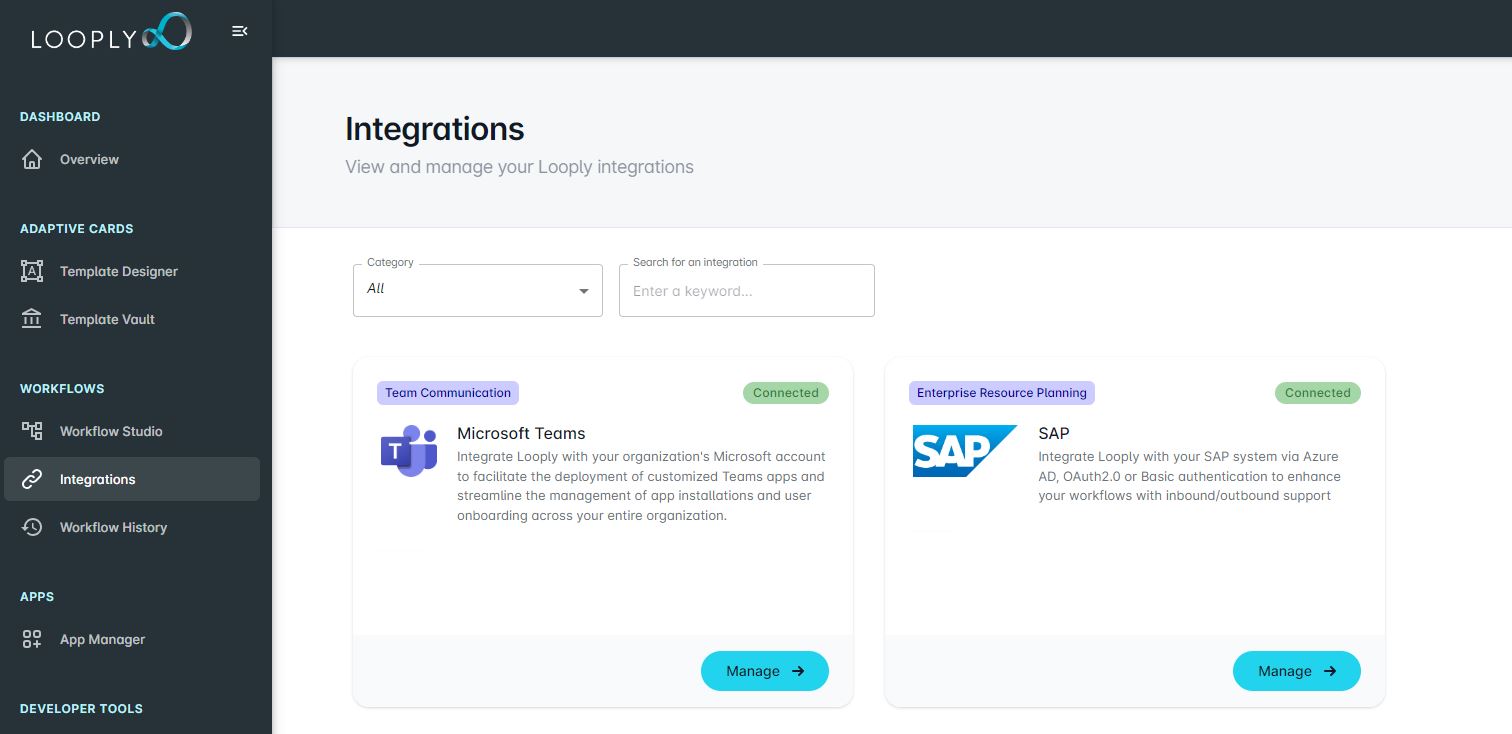
Looply Integrations
There’s no need to develop a custom Teams bot: Instead, you can configure, customize and deploy your own Teams bots within Looply without any development.
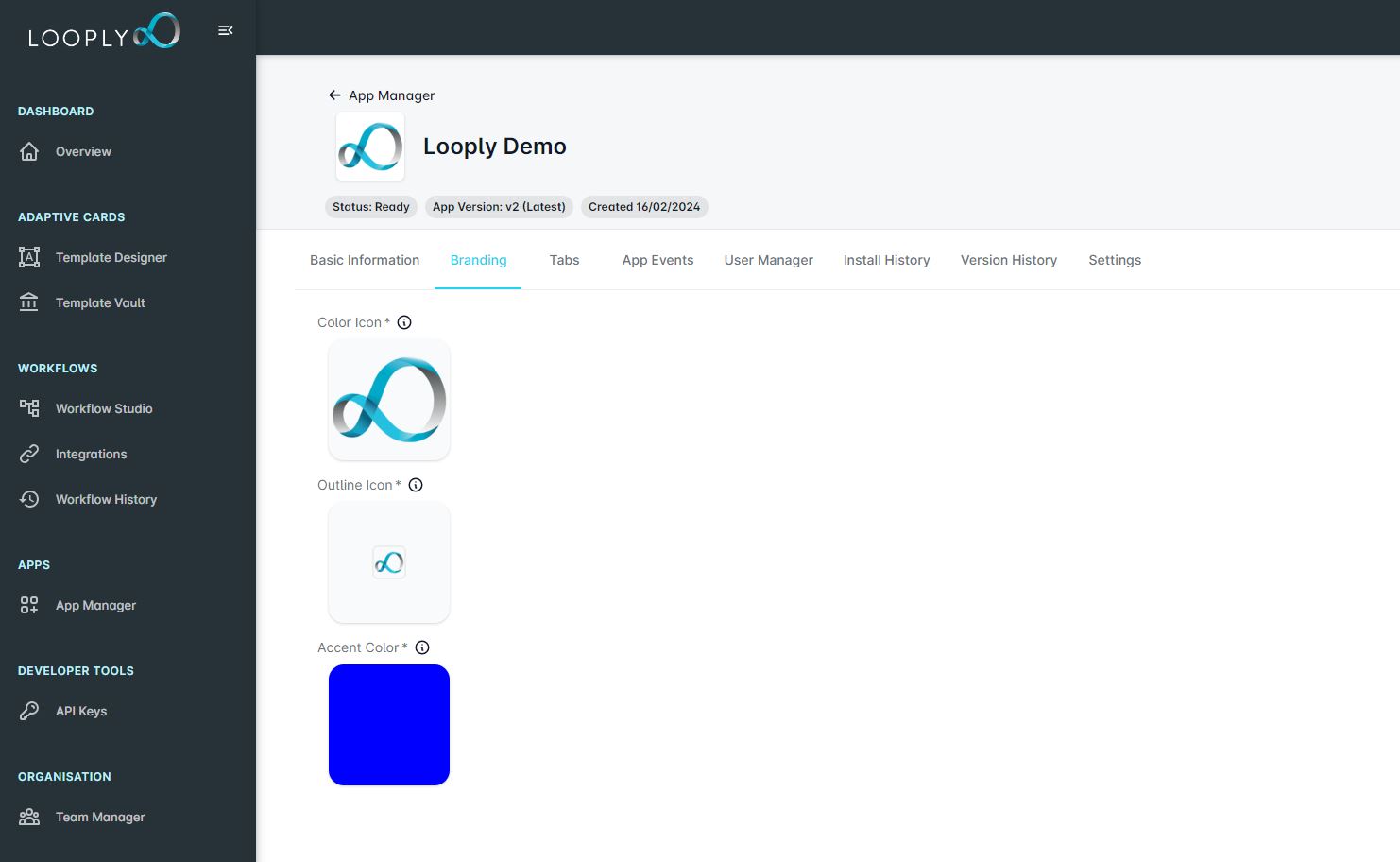
Looply App Manager
Looply consists of an ABAP Add-on, a plug-in to deploy into S/4HANA or Business Suite, which takes away the need for a lot of custom development. There is no need to develop any custom oData services.
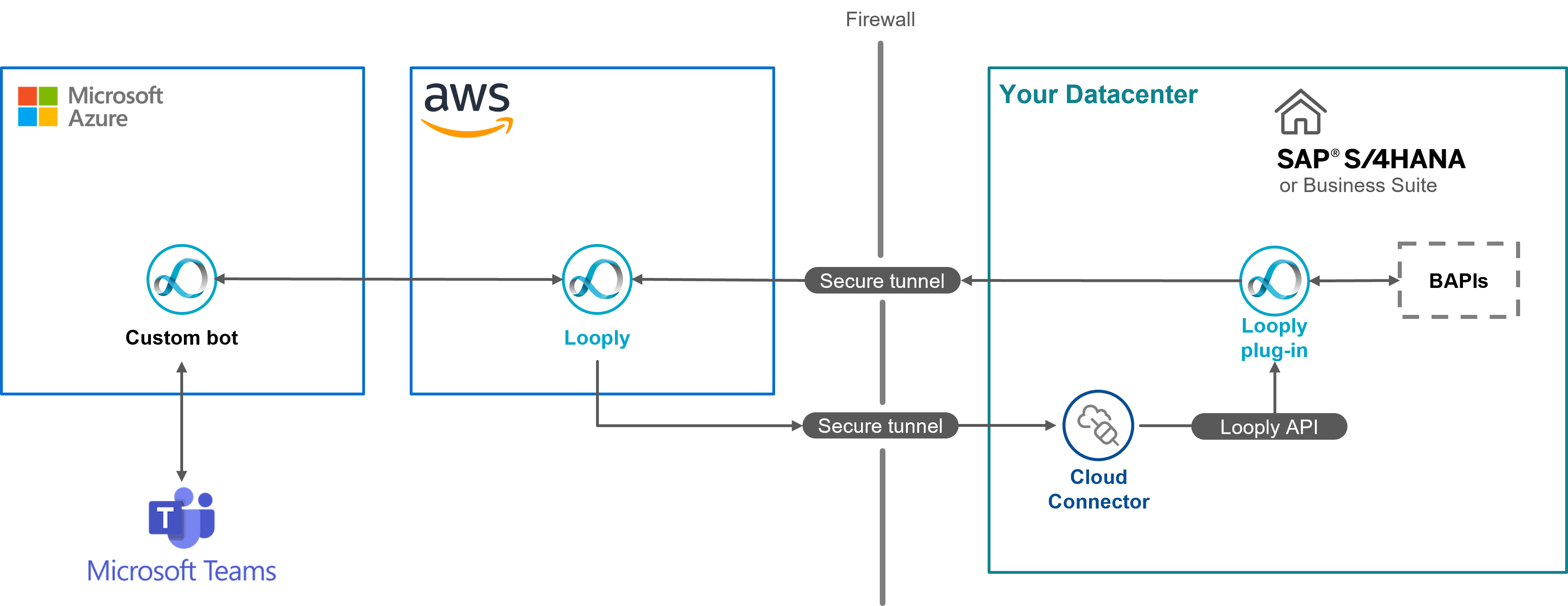
Looply deployment without BTP
This means that the technical architecture is far simpler than for other approaches.
Adaptive Card development in Looply is managed using an AI-assisted no-code Template Designer.
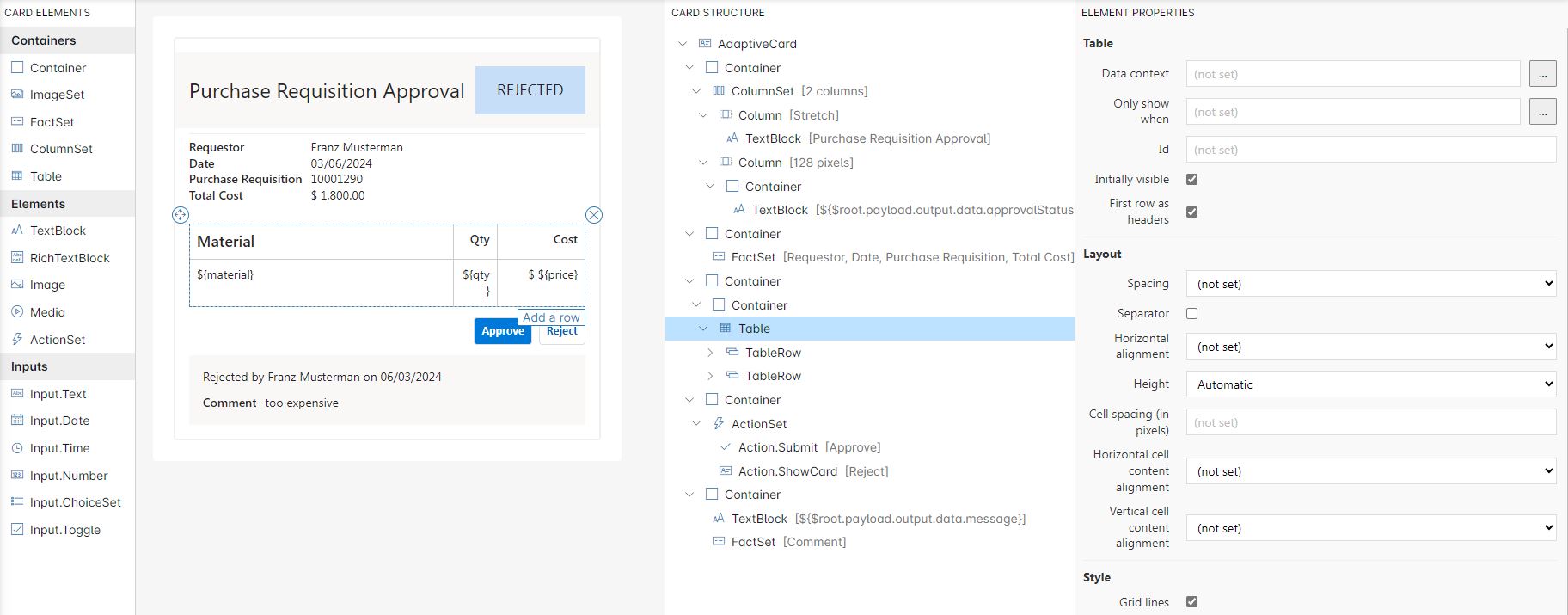
Looply Template Designer
At the heart of Looply is the Workflow Studio. In the Workflow Studio you build the logic to generate and update Cards in Teams at run-time, and handle user actions taken on the cards: Each workflow is like a mini-app, that you can build without any coding.
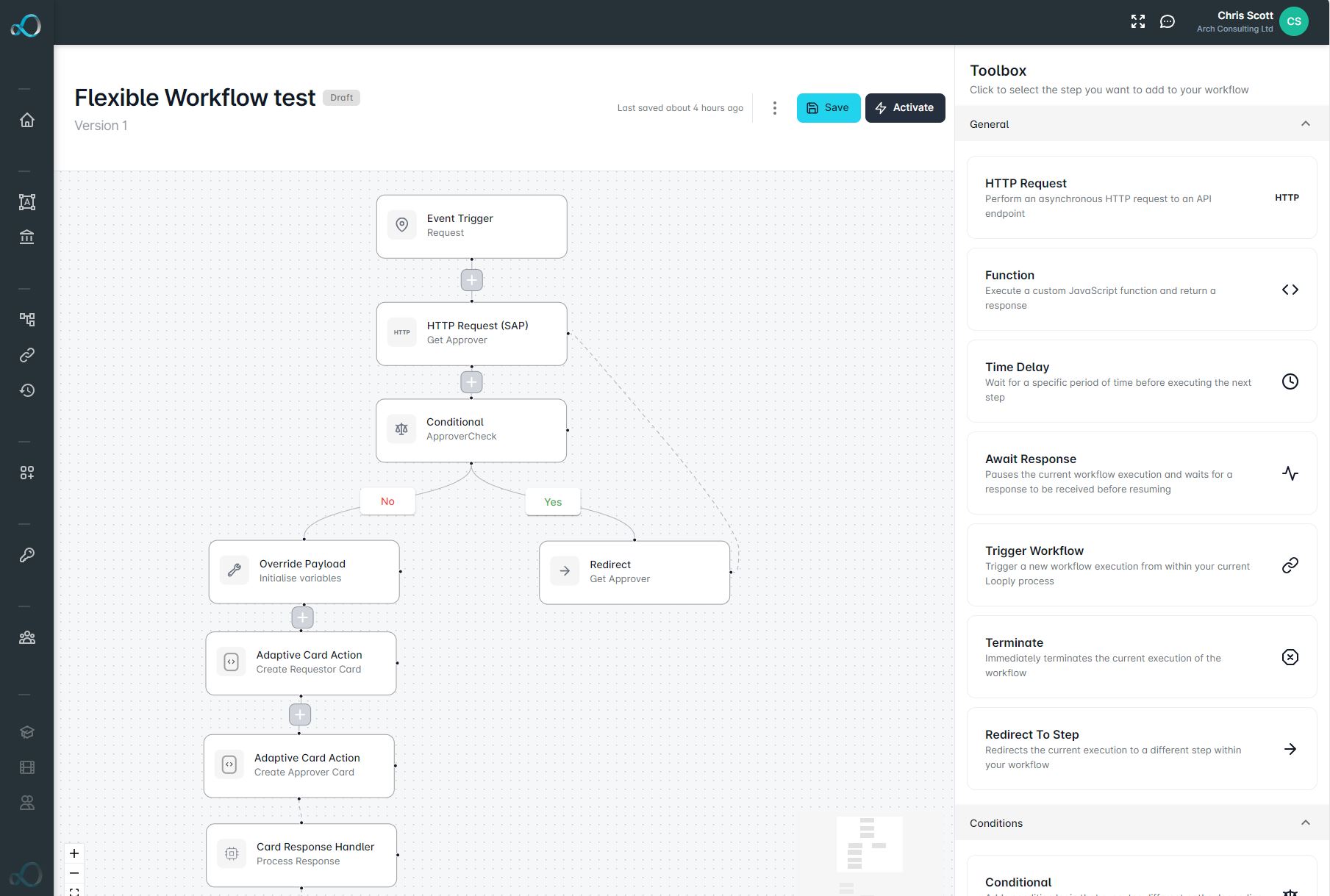
Looply Workflow Studio
Each workflow can call functions or APIs to collect data from or update data to other systems in the enterprise. And each workflow has a unique API URL so that it can be triggered from any system too. So although specific integrations to SAP S/4HANA and Microsoft Teams are provided, the reach of the solution is much wider.
When changes are needed to be made to deployed Cards and Workflows, then new versions are automatically generated, such that existing processes are not impacted.
This means the speed of development is greatly accelerated, and ongoing maintenance is much easier, so there is a business case to provide Teams integration for many SAP-based processes.
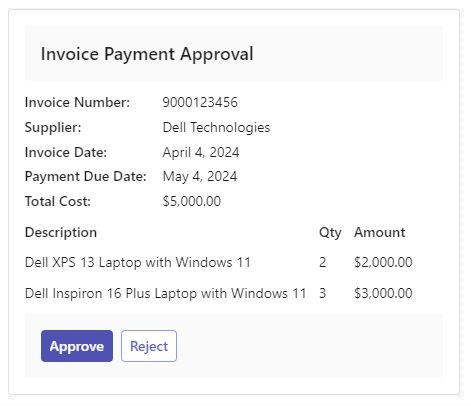
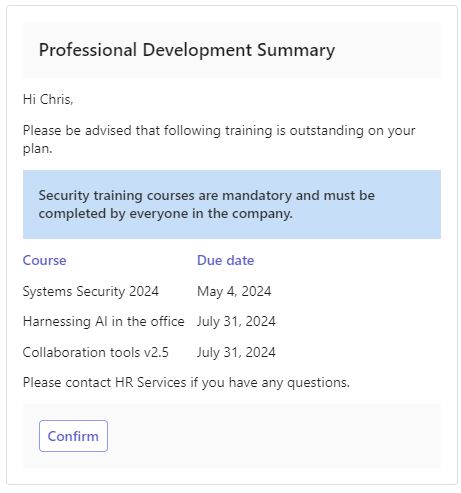

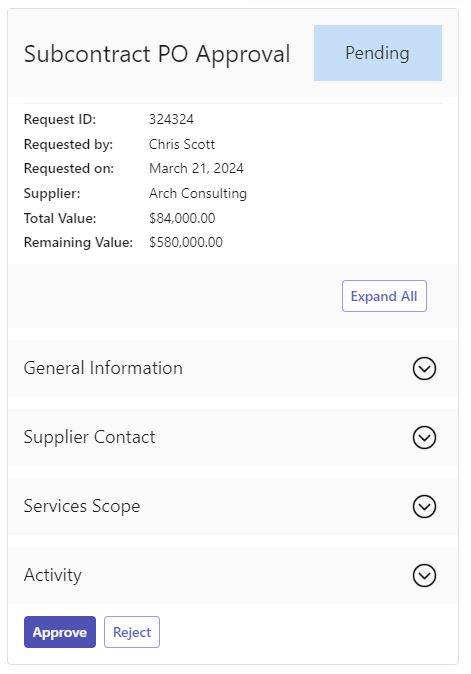
This can lead to a number of additional challenges!
- How do I manage my Teams chat if there are hundreds of notifications?
- How can I easily see which cards are with me and which are waiting for an action?
The solution is the Looply Notification Centre, through which users can easily filter and sort their Cards. The Inbox is a component of the generated Teams bot – there is no set-up required.
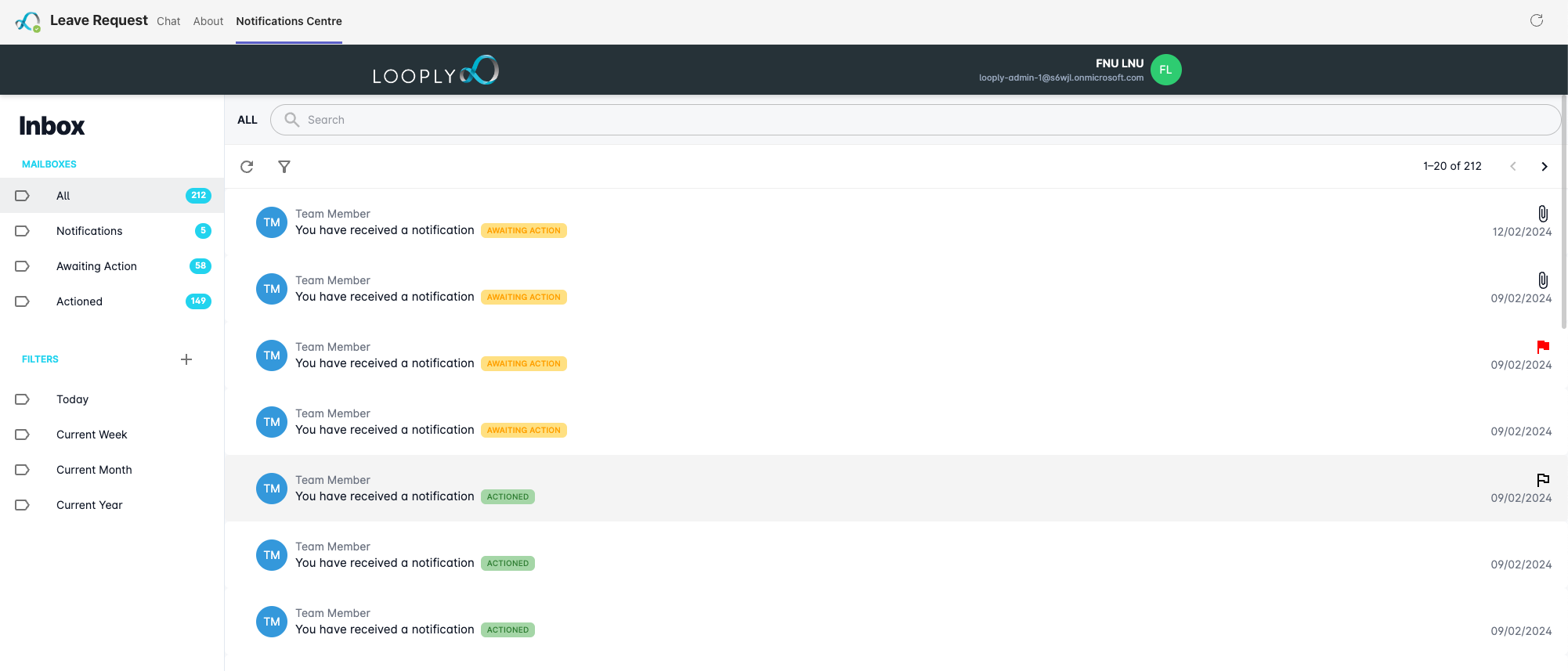
Notification Centre
Looply includes an Administrator dashboard which enables you to track everything that’s happening.
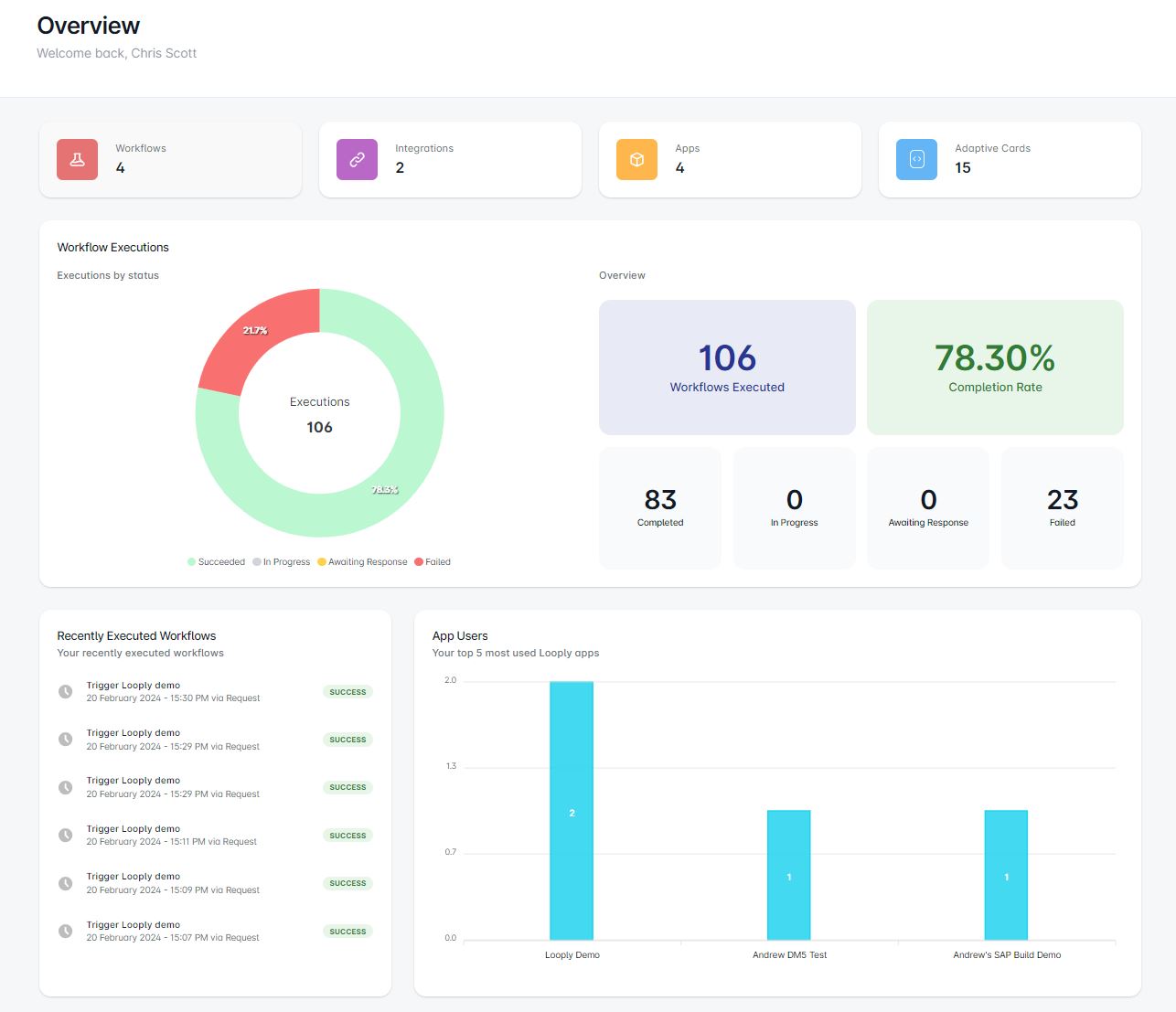
Looply Dashboard
Every workflow generates a detailed log which can be viewed graphically, so you can see at-a-glance which workflow steps were executed, and the outcomes of each step.
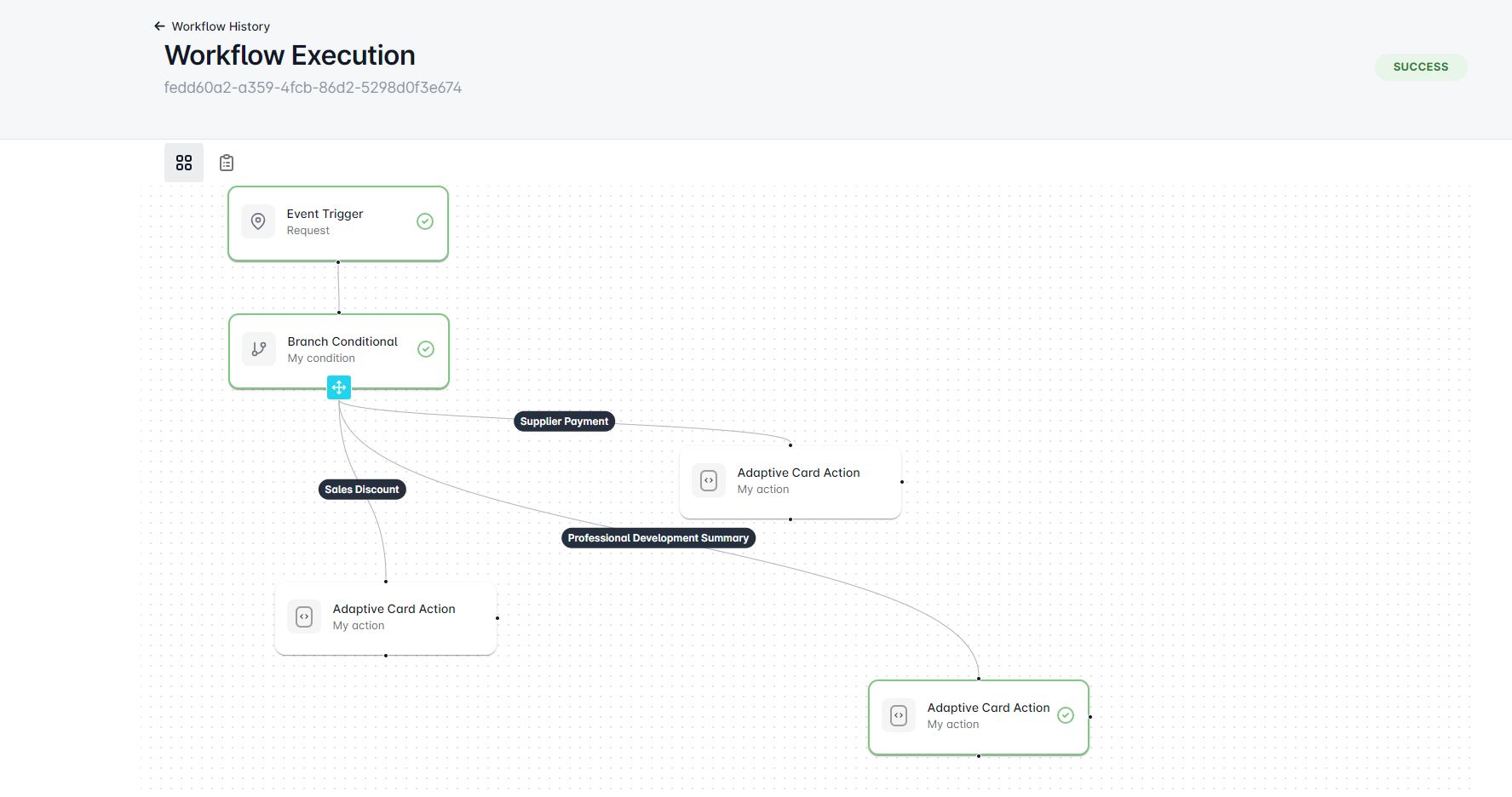
Graphical Workflow History
SUMMARY
There really is no comparison between Looply and any other approach: Looply is a platform specifically designed for the integration of SAP processes and Microsoft Teams.
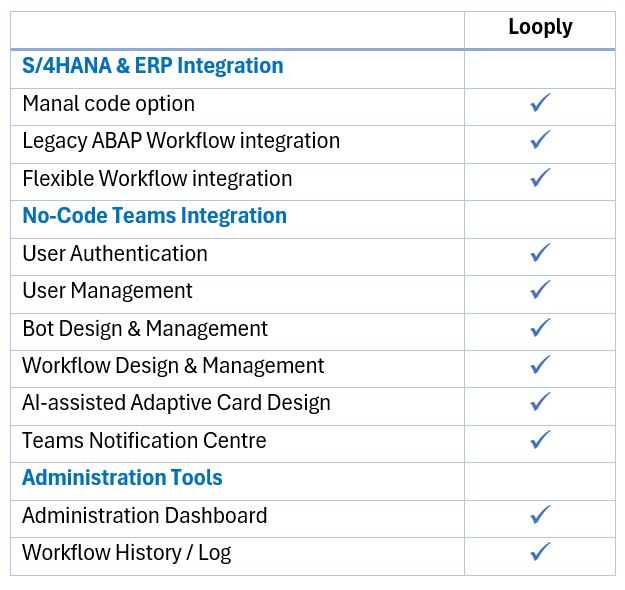
Looply includes all the functionality you need to deliver such integrations at scale. And it includes the functionality – like the Administrator tools and the Notification Centre, that are required as a result of the delivery of such integrations.
More Resources
See All Related Content-

-

-

-

How to Streamline SAP Integration? End-User Focus is the Answer
Reading time: 3 mins

